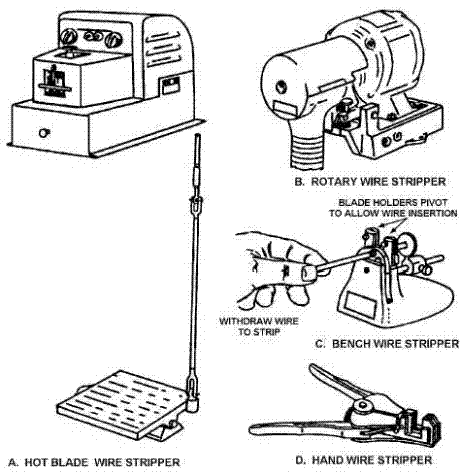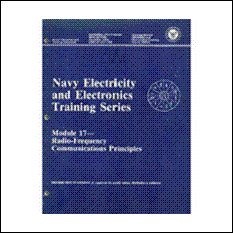Wiring Techniques
This section will assist you in learning the basic skills of proper wiring techniques. It explains the different ways to terminate and splice electrical conductors. In addition to wiring techniques it also discusses various soldering techniques that will assist you in mastering the basic soldering skills.
(For more in-depth training on soldering see our tutorials in the "Soldering" section.)
The section ends with a discussion of the procedure to be followed when you lace wire bundles within electrical and electronic equipment.
CONDUCTOR SPLICES AND TERMINAL CONNECTIONS
Conductor splices and connections are an essential part of any electrical circuit. When conductors join each other or connect to a load, splices or terminals must be used. Therefore, it is important that they be properly made. Any electrical circuit is only as good as its weakest link.
The basic requirement of any splice or
connection is that it be both mechanically and electrically as sound as
the conductor or device with which it is used. Quality workmanship and
materials must be used to ensure lasting electrical contact, physical
strength, and insulation. The most common methods of making splices and
connections in electrical cables is explained in the discussion that
follows.
INSULATION REMOVAL
The preferred method of removing insulation is with a wire-stripping tool, if available. A sharp knife may also be used. Other typical wire strippers in use in electronic fields are illustrated in the figure below. The hot-blade, rotary, and bench wire strippers (views A, B, and C, respectively) are usually found in shops where large wire bundles are made.
When using any of these automatic wire strippers, follow the manufacturer's instructions for adjusting the machine; this avoids nicking, cutting, or otherwise damaging the conductors. The hand wire strippers are common hand tools found throughout the field of electronics. The hand wire strippers (view D of the figure) are the ones you will most likely be using. Wire strippers vary in size according to wire size and can be ordered for any size needed.

Typical wire stripping tools.
Hand Wire Stripper
The procedure for stripping wire with the hand wire stripper is as follows (refer to the figure below.)

Stripping wire with a hand stripper.
1. Insert the wire into the center of the correct cutting slot for the wire size to be stripped. The wire sizes are listed on the cutting jaws of the hand wire strippers beneath each slot.
2. After inserting the wire into the proper slot, close the handles together as far as they will go.
3.
Slowly release the pressure on the handles so as not to allow the
cutting blades to make contact with the stripped conductor. On some of
the newer style hand wire strippers, the cutting jaws have a safety lock
that helps prevent this from happening. Continue to release pressure
until the gripper jaws release the stripped wire, then remove
knife-stripping, hot-blade and general wire stripping instructions
Types of splices and general instructions on how to make each type
Splice insulation, types of tapes, and terminal lugs
Noninsulated terminals and the compressed air/nitrogen heating tool
Noninsulated-copper-terminals and aluminum terminals and splices
Preinsulated copper terminals, lugs, and splices, and terminating copper wire
Preinsulated-splices and the crimping procedure for splices















